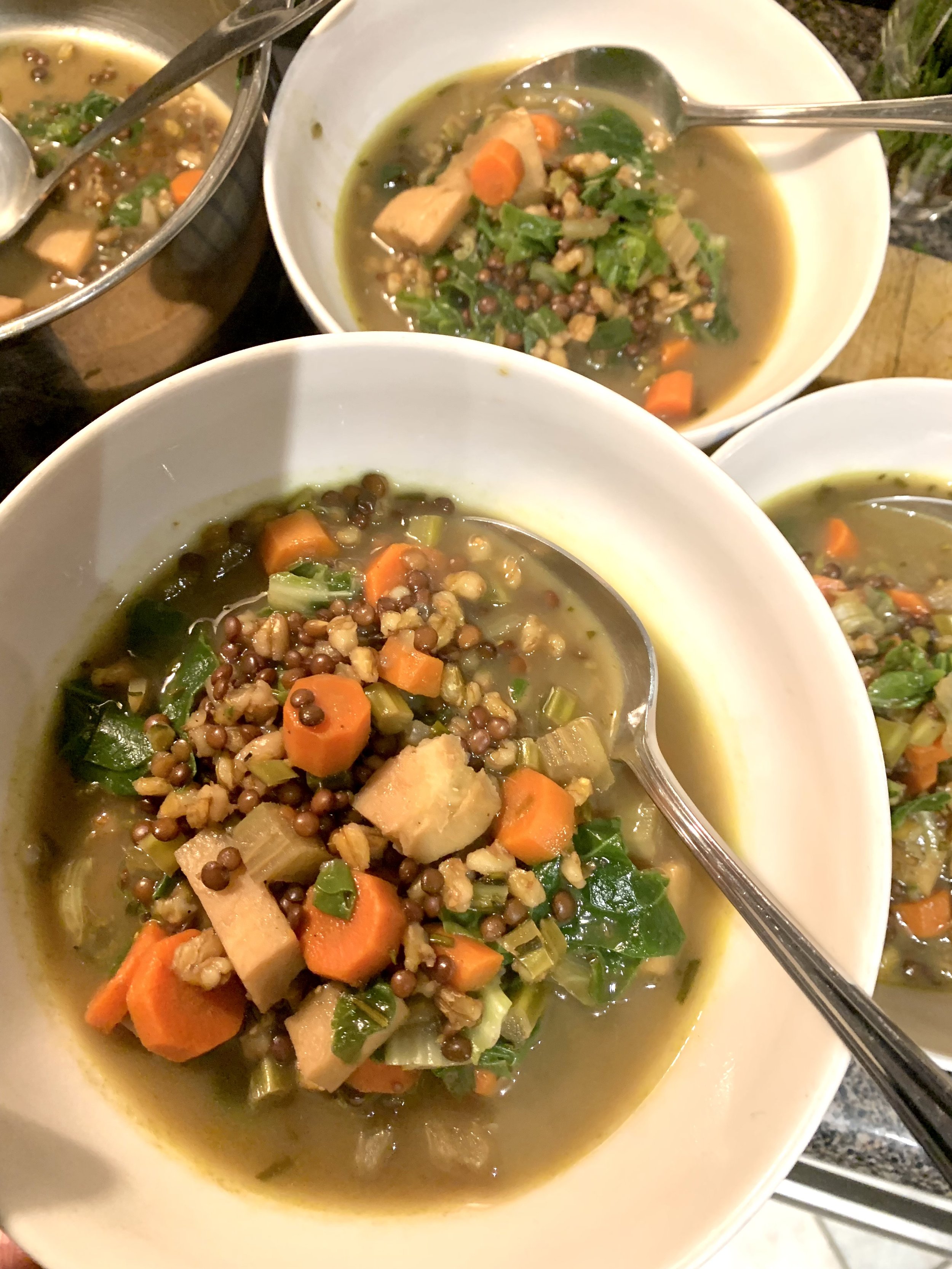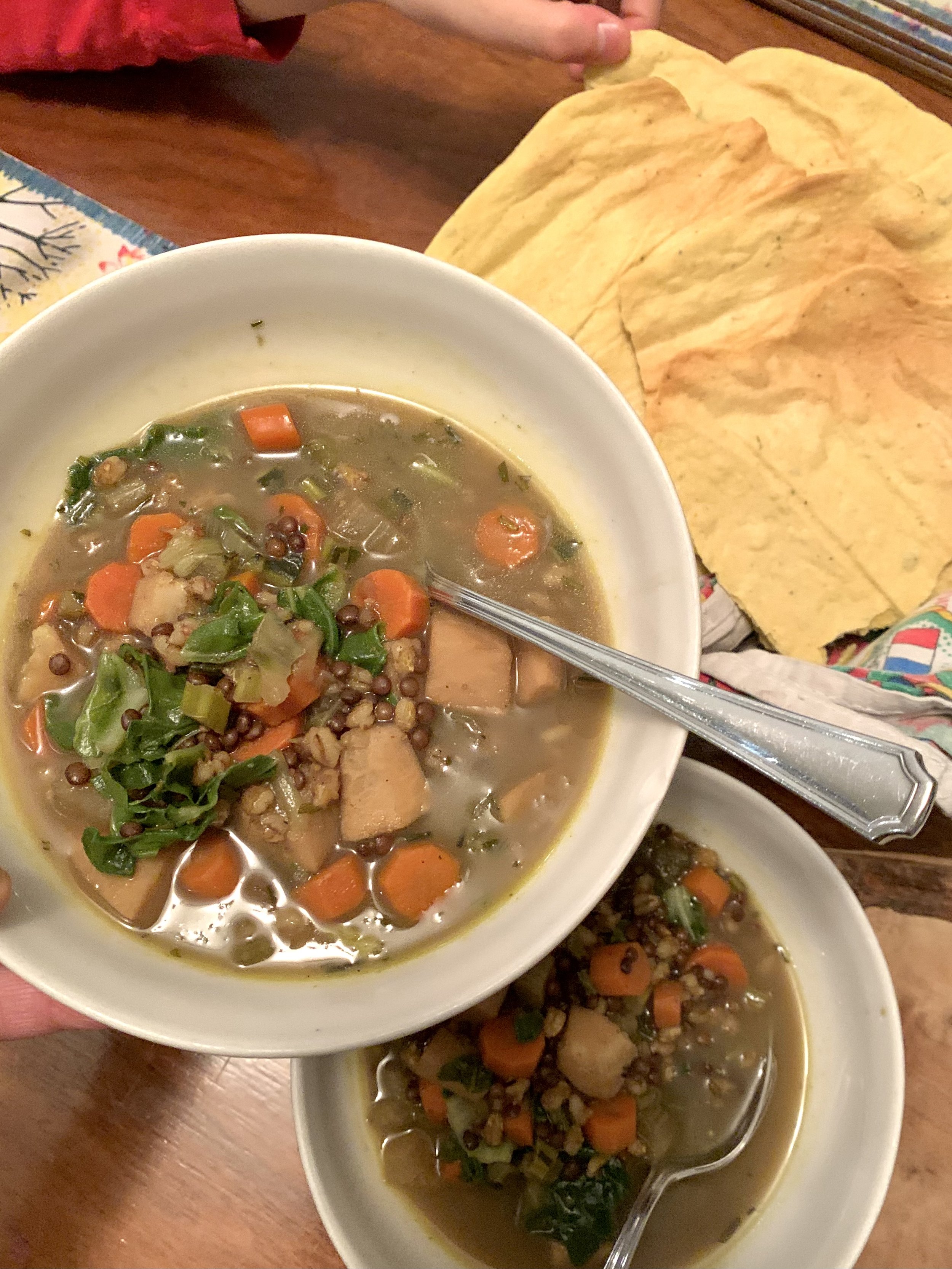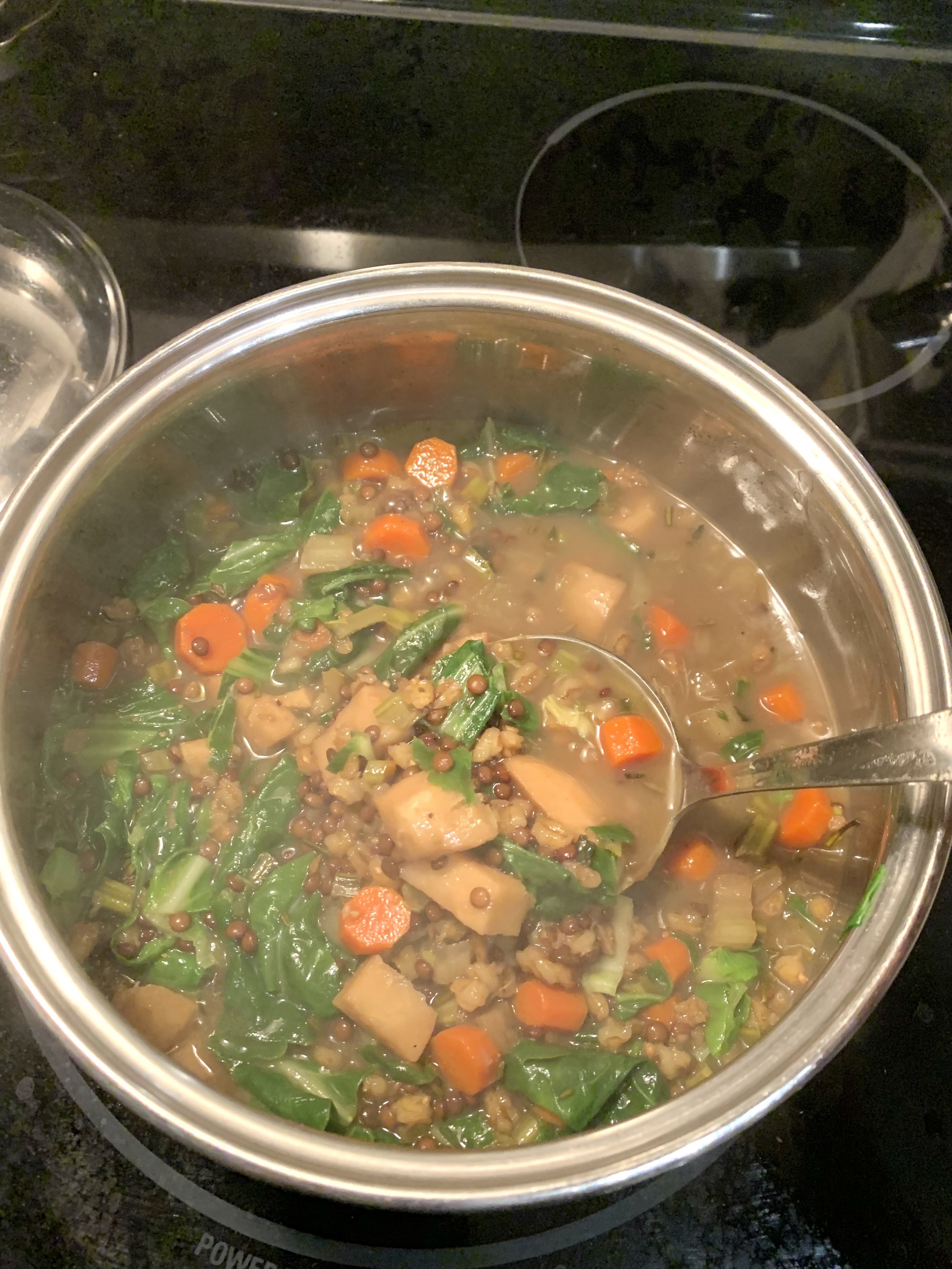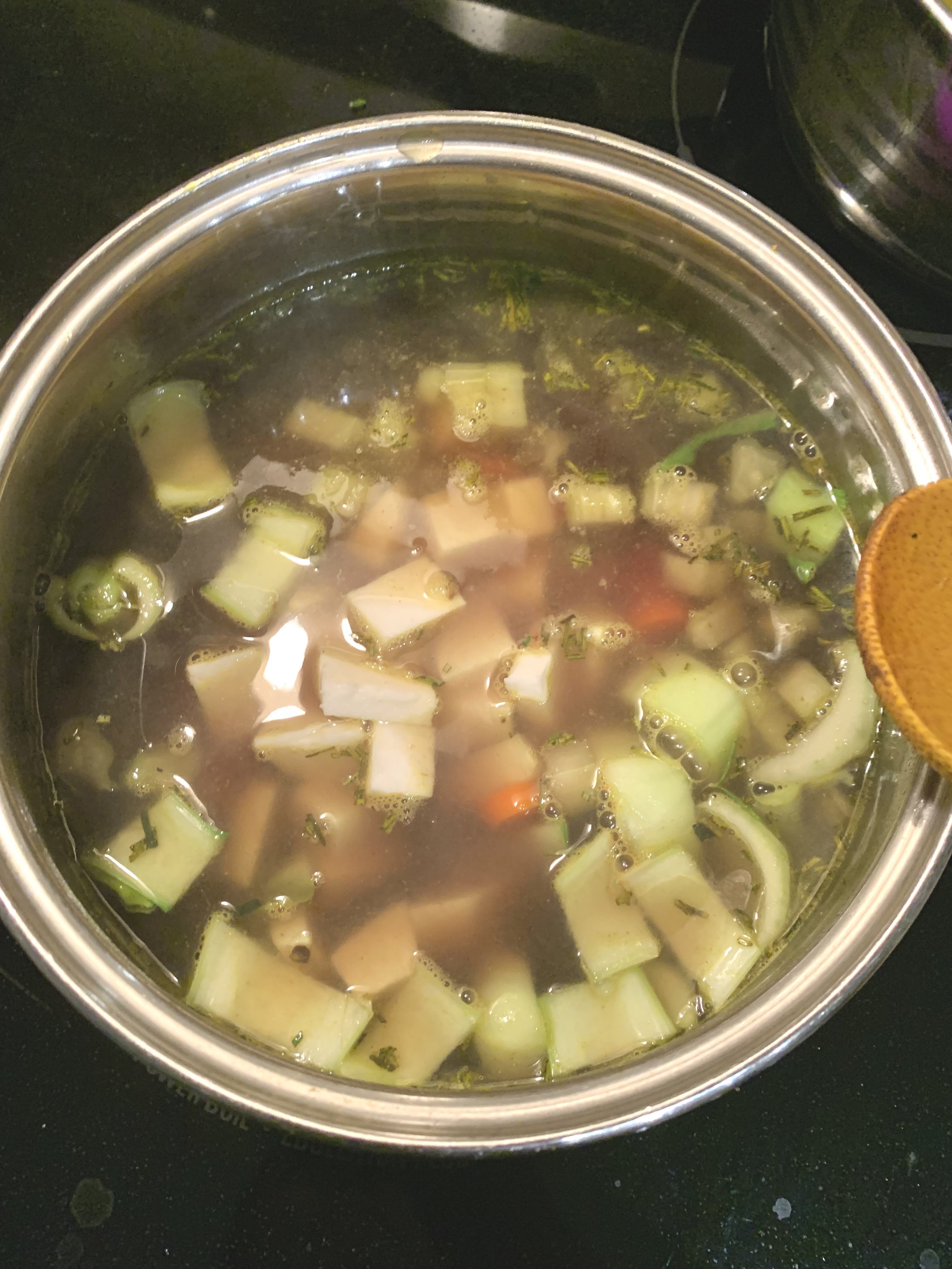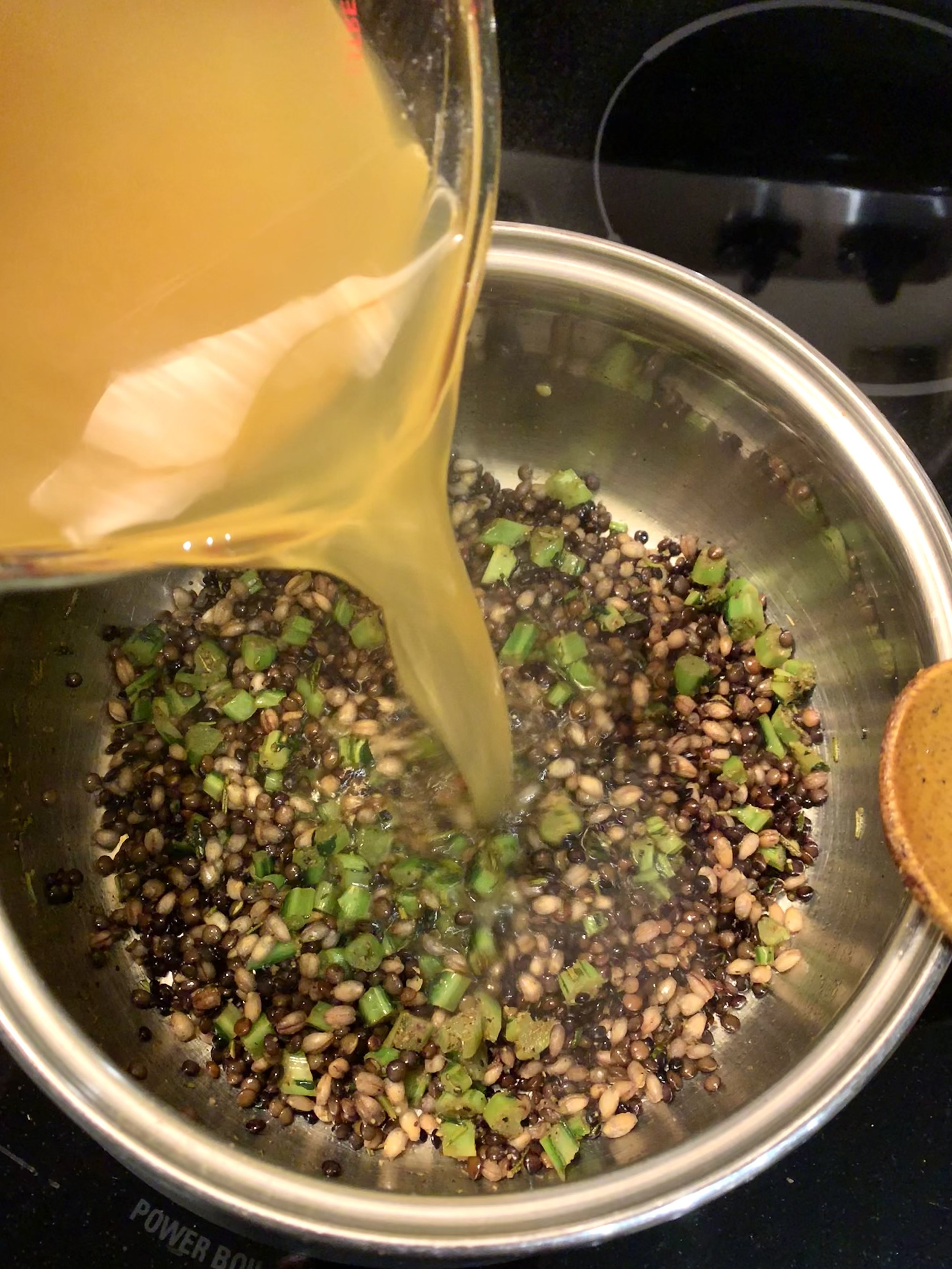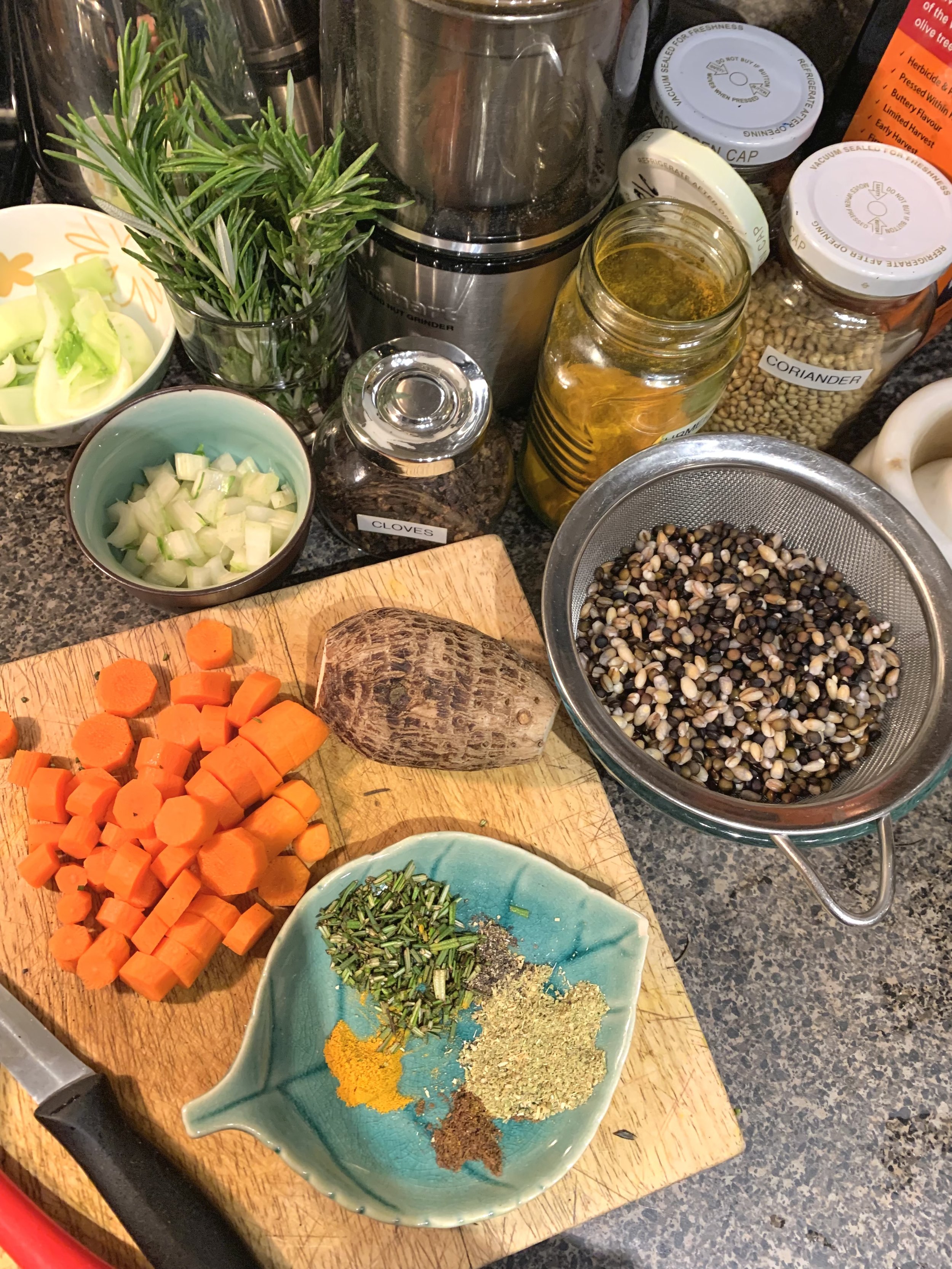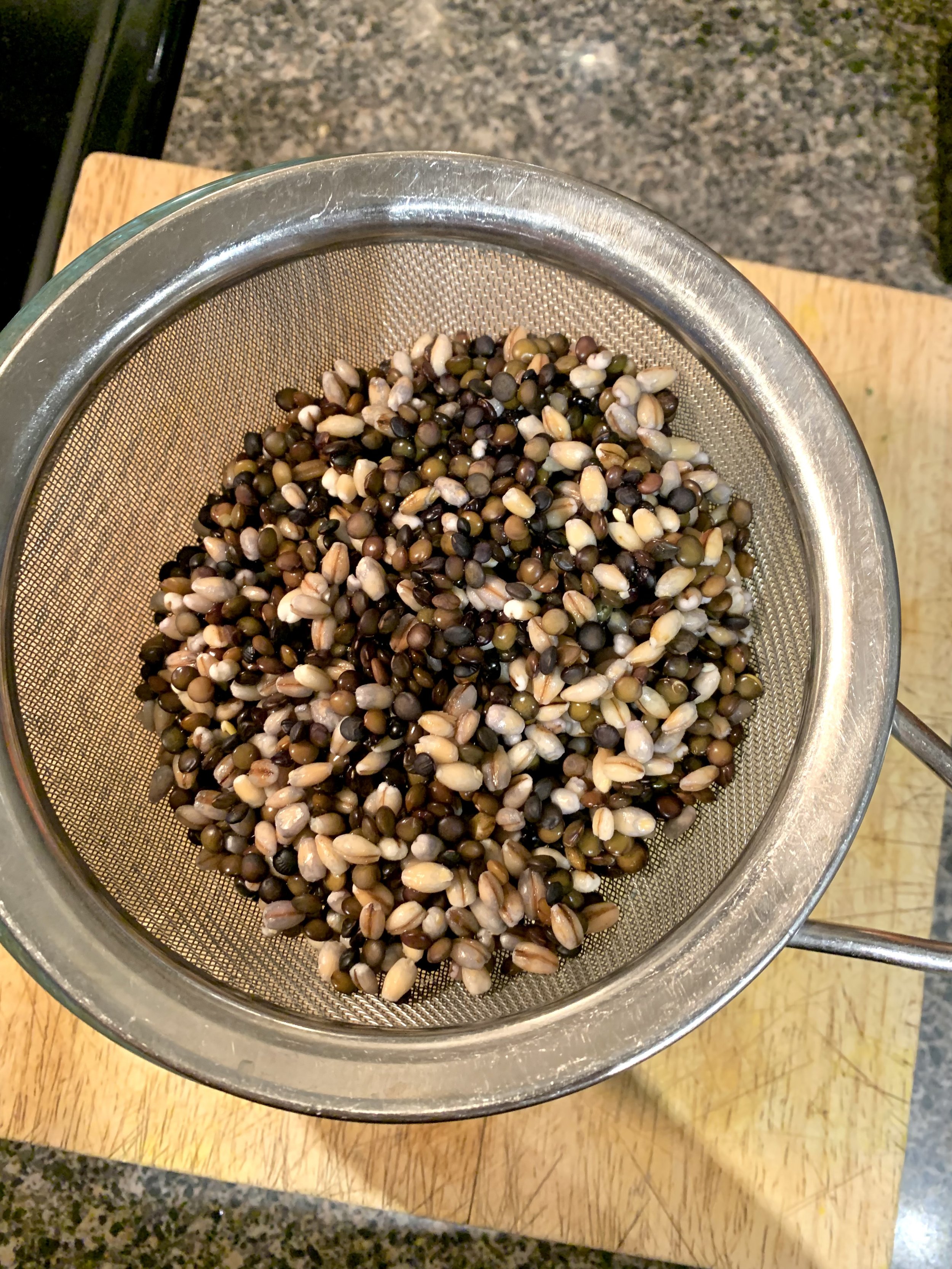Vegan Lentil Stew
WELCOME TO MY BLOG! I’M EVANGELINE & A MOM. ALSO, AN RMT, and AYURVEDA-YOGA COUNSELLOR. I STARTED MY BLOG DURING COVID TO STAY CONNECTED TO MY CLIENTS AND SHARE MY LOVE OF COOKING HEALTHY, AYURVEDIC MEALS.
AYURVEDIC COOKING TAKES A BALANCED, HEALING APPROACH FOR YOUR DAILY COOKING NEEDS. YOU WILL FIND SIMPLE, EASY TO MAKE NOURISHING MEALS I HAVE MADE FOR MY FAMILY, WITH A DOSE OF AYURVEDA & YOGA WISDOM.
A delicious vegan stew we had last night with beluga lentils. You can use any lentils you have. If you are using split mung beans or split red lentils, it will take less time to cook, about half an hour. When cooking with taro, you may want to soak it after peeling it if you still have other things to prep, or work with it last because it has a slimy texture. In Ayurveda, taro and other similar type foods, like barley, cassava, tapioca, yucca, arrowroot, nagaimo, and okra are used during detoxification in the spring and fall because they have a slimy quality which allows toxins to bind to them in preparation for evacuation. Taro is also a great substitute if you are cutting down or avoiding regular potatoes.
The heating elements in the stew is perfect for cool or cold weather, and not overpowering. I don’t cook with onions (or garlic), maybe the odd time as a special request, but I find using sulfur rich vegetables from the brassica family (such as broccoli, cauliflower, kale, bok choy, Swiss chard) satisfies the senses for that oniony smell and taste.
Vegan Lentil Stew
Yield: 3 - 4 Servings
Prep Time: 15 minutes
Cook Time: 50-60 minutes
INGREDIENTS
⅓ cup beluga lentils, soaked overnight and rinsed well
2 Tbsp barley, soaked overnight and rinsed well
4 cups *vegetable stock
2 tsp olive oil
2 tsp fresh rosemary, thyme or oregano or ⅔ tsp dried; fresh rosemary was used in this batch
¼ tsp ground black peppercorns
¼ tsp turmeric powder
3 cloves, ground
½ tsp ground coriander
½ tsp ground fennel
½ cup kale or broccoli stems, cut in small pieces
2 pieces of Swiss chard, stems cut in chunks, and leaves
1 bok choy, stems cut in chunks, and leaves
1 small taro, peeled, soaked in water and cut in ½ inch cubes
2 medium carrots, cut in chunks
Salt to taste
Substitutions:
- 2 celery stems, cut in chunks instead of Swiss chard and bok choy
- Add an extra taro or double the barley, if you don’t have one of them
DIRECTIONS
Rinse the beluga lentils and barley well.
In a large pot, heat olive oil on medium heat, then add all the spices, and pieces of kale or broccoli stems. Because this lentil stew has no onions, I use kale or broccoli stems which has a familiar taste from sulfur compounds that onions have.
Add lentils and barley and combine all together, then pour in vegetable stock and stir, turning up heat to high.
When it boils, add taro, carrots and chunky stems of Swiss Chard and bok choy, and wait for it to boil again, then turn heat down to medium-low, and cover with a lid. Cook for 45-50 minutes. The soup will thicken a bit while cooking. If you are making chapati crackers, this is the time to make it, while the soup is cooking.
Add the leaves of chard and bok choy and close the lid to cook for another few minutes.
Serve hot with chapati crackers. Finish with a squirt of lime.
Enjoy!
*Vegetable Broth
To make your own vegetable broth for this stew: Put 4 cups of spring water in a pot on high heat with scraps of vegetable stems—kale, broccoli, spinach, chard about 3 cups cut in pieces, 1 handful of parsley with stems, 1 tsp olive oil, 2 tsps Spice Mix and 1 tsp sea salt. Boil for 5 minutes, then turn heat down to low and cover with a lid and simmer for at least 20 minutes, up to an hour. Strain into a large glass pouring vessel or bowl. Set aside and use right away for the tastiest result, or let cool and refrigerate for up to 5 days.
The Spice Mix:
6 tsp fennel seeds
6 tsp coriander seeds
1 tsp cumin seeds
1 tsp turmeric powder
Grind the seeds in a spice grinder, add turmeric and pulse some more. Store in a tight fitting jar away from heat and sunlight. Use can also use this spice mix in your vegetables, protein or grains. Heat ghee or olive oil then add spices and the food you are cooking.
Profile of Spices & Herbs
Black peppercorn - heating, opens up channels, relieve congestion
Cloves - opens up the channels, without overheating
Coriander - cooling, diuretic, ushers toxins for elimination through the kidneys
Fennel - cooling, balancing effect to support digestion
Oregano - heating effect, helps fight colds and flus with anti-inflammatory, anti-bacterial, anti-viral, anti-fungal properties
Parsley - a diuretic like coriander and cilantro, use for water retention
Rosemary - soothing with anti-inflammatory and antioxidant qualities
Thyme - soothing for colds and flus with anti-inflammatory, anti-bacterial, anti-viral, antioxidant properties
Turmeric - cleanses the liver, known in Ayurveda as a “friend to the liver”, antioxidant, anti-inflammatory, anti-viral, anti-bacterial
References
Yoga of Herbs - Vasant Lad and David Frawley, 2001
Vaidya R. K. Mishra - Notes from Shaka Vansiya Ayurveda Courses, Practicum, Conferences and Lectures 2003-2015

